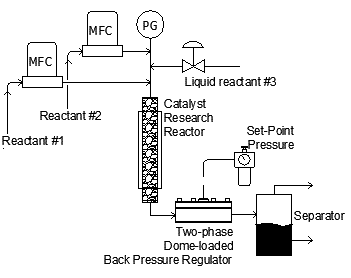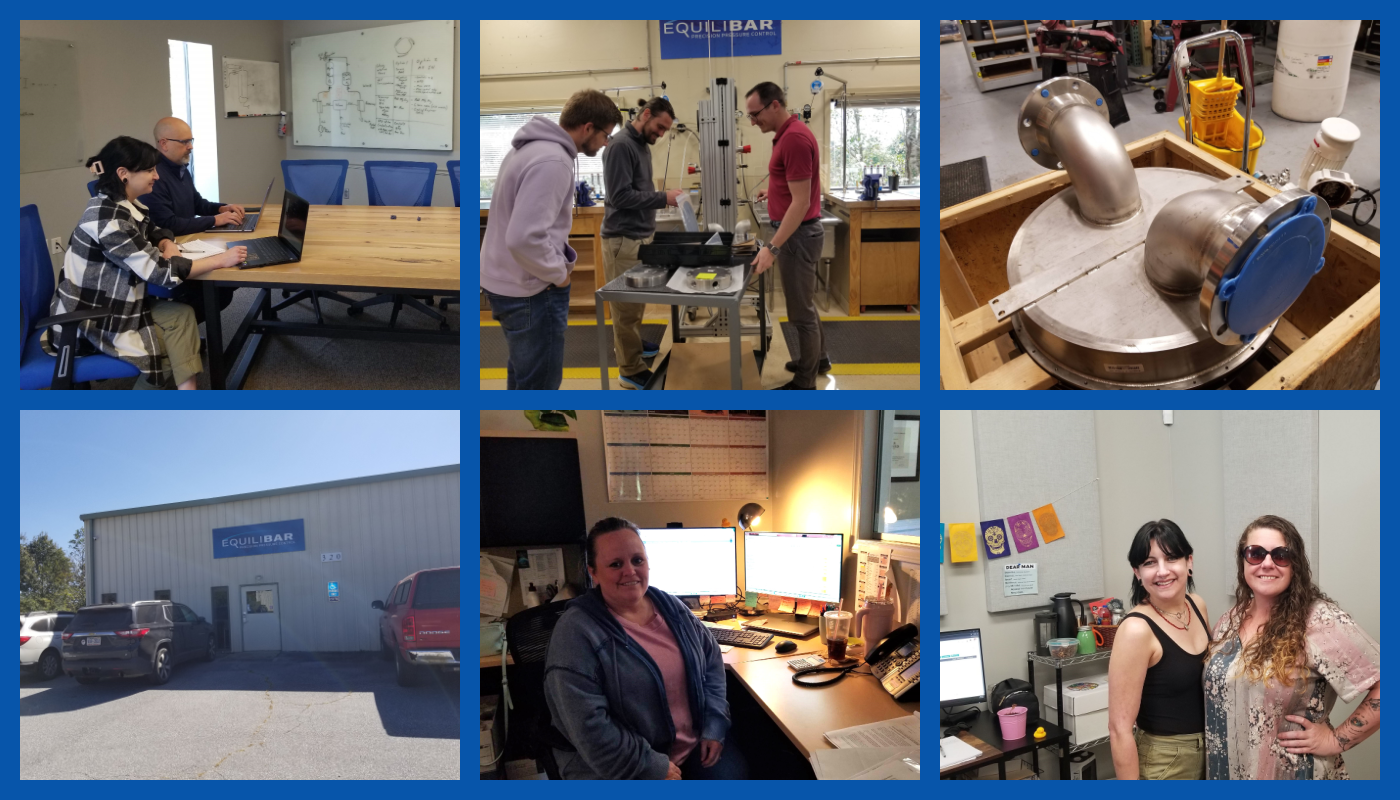Two-phase flow and multi-phase flow occurs in conditions where gas and liquid are both present; or in water and oil flow streams; or in applications with gas, brine and oil processed all together. The unique multi-orifice design of the Equilibar® back pressure regulator (BPR) allows it to handle two-phase or mixed-phase flow streams while maintaining high precision.
Common applications for multi-phase flow include laboratory reactors for catalyst research, fuel cell testing systems involving condensation, and electrolysis system pressure balancing.
Traditional BPRs use a single annular valve seat, often very small. When slugs of liquid flood the valve throat, volumetric flow rate drops suddenly as the denser fluid is accelerated through orifice. This momentary reduction in volumetric flow disrupts the stability of the upstream process pressure.
The unique Equilibar technology, however, uses a direct sealing diaphragm over a plate of multiple orifices to control pressure (see how it works). The valve action is not delivered by the movement of a tapered stem, but by the close proximity between the diaphragm and the orifice plate. The supple diaphragm can vary its proximity to the orifices nearly instantaneously to adjust to the varying valve coefficient (Cv) requirements of the various phases.
A further benefit is provided by Equilibar’s unique multiple orifice design: even if one orifice is totally flooded by the denser liquid, volumetric flow control can still be maintained so long as some of the orifices are still predominantly in the gas phase.
Watch a demonstration of Equilibar’s control of multi-phase flow.
Application Focus: Two-Phase Flow in Petrochemical Catalytic Reactor
Laboratory reactors in the petrochemical sector, such as in catalyst research often have mixed phase outflow. In order to use a single phase back pressure regulator, it is necessary to install a liquid separator upstream of the back pressure regulator. However, depending on the pressure range and size requirements, this separator might be very expensive and meet ASME Boiler and Pressure Vessel code. The liquid outflow will likely require a level control system.
One issue that should be considered is that of fine mists and aerosols when two-phase flow is reduced from a high pressure. Depending on the surface tension and other fluid characteristics, the separations process can be made more difficult.
Where applicable, the use of the Equilibar back pressure regulator in mixed phase application can significantly reduce the cost and complexity of your laboratory reactor process.
- Read our Customer Case Study where Integrated Lab Solutions in Berlin used the Equilibar to achieve high pressure control of multi-phase reactants
- Contact our engineers to determine which Equilibar back pressure regulator is best suited for your unique two-phase flow application.
- Learn more about the unique capabilities of Equilibar’s back pressure regulators






